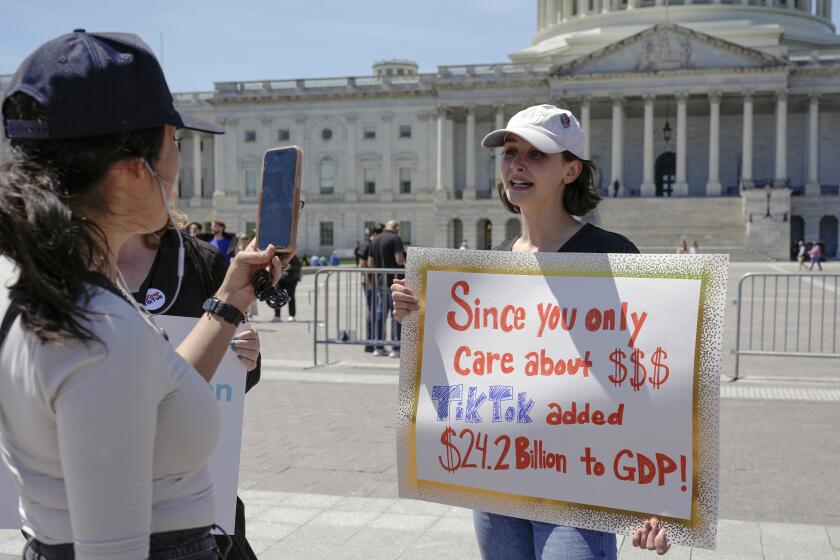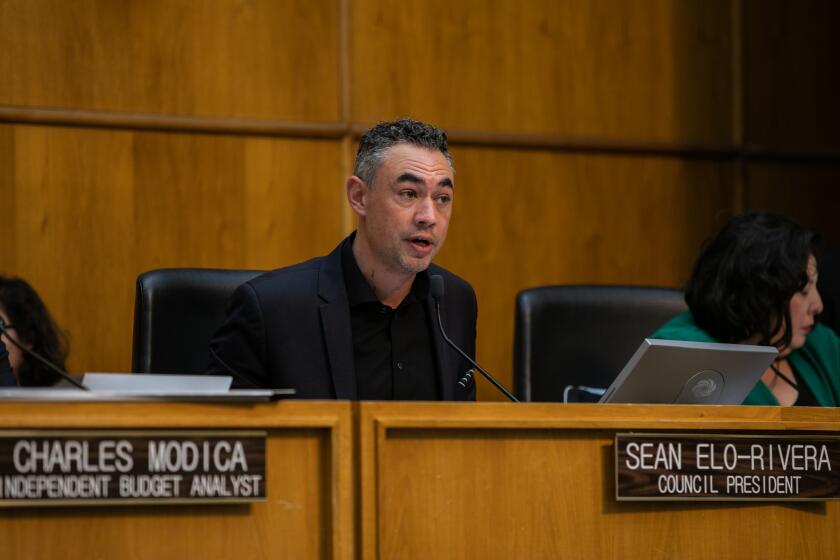Big problems, big costs face City Hall
Incoming Mayor Kevin Faulconer and the City Council have some big problems to handle and disputes to resolve. Here’s a quick guide:
Police: Half of the city’s 1,800-plus police officers are eligible to retire in the next four years and the department has struggled to recruit and retain young officers because of comparatively low compensation compared to other law-enforcement agencies. In addition, a rash of incidents by officers — from sexual misconduct to DUIs — in recent years has led some critics to call for a major change to the department’s culture.
Infrastructure: The city’s backlog of street, storm drain and building projects was projected at $898 million two years ago and many believe that tally now far exceeds $1 billion. That assessment also doesn’t include certain assets, such as the 5,000-plus miles of sidewalks in the city. Finding the money to address all of those infrastructure needs is perhaps the biggest problem facing the city.
Stormwater: The city faces a $4 billion bill over the next 17 years because of regulations designed to scrub pollution from urban runoff, according to its comprehensive annual financial report released last month. That document is what bondholders and other lenders use to assess creditworthiness. Rates would need to rise 1,000 percent for the stormwater portion of residential and business utility bills in San Diego just to cover increased costs over five years.
Sewage: The Point Loma Wastewater Treatment Plant is the last, big sewage-processing facility in the country that hasn’t met the federal standard of secondary treatment. Getting up to speed would cost $1.5 billion to $2 billion, a total that could reach up to $3.5 billion with interest charge. That kind of expense would likely trigger sewer rate hikes and service cuts in San Diego and the 16 cities and water agencies that use the plant. After 20 years of securing waivers that have exempted San Diego from upgrading the facility, the city may not get another reprieve when its current permit expires in 2015.
Minimum wage: The Democratic majority on the City Council is keen to put a proposal to increase the minimum wage in San Diego on the November ballot. How much of an increase has yet to be determined, but Mayor-elect Kevin Faulconer has repeatedly said he opposed the idea because it would make businesses in San Diego less competitive with those in surrounding cities. The state has already approved gradually hiking the minimum wage to $10 by Jan. 1, 2016.
Managed competition: This program which pits city employees against private contractors in competitive bids to provide certain city services will be revived under Faulconer, who has long been a big supporter of the process. The most likely candidate for managed competition is the city’s in-house trash collection service because many public agencies throughout the country have outsourced that task with success. Council Democrats are largely skeptical of managed competition.
Ballot battles: The June ballot could have two measures on it that draw a lot of civic attention. The first is the Barrio Logan Community Plan which pits the shipyard industry against neighborhood residents over the plan’s buffer zone between the two. The second is a fee increase on commercial development to pay for affordable housing projects. Faulconer will be leading the fight against both proposals while the Democratic council majority supports them.
Balboa Park: Next year’s planned centennial celebration for the city’s crown jewel is in trouble. The nonprofit group charged with organizing the yearlong event has received limited private donations and no corporate sponsors. It also hasn’t demonstrated much progress which has led to a delay in tourism revenue being funneled to the event. It remains to be see if it’s too late to get back on track in time to commemorate the 1915 Panama-California Exposition, which drew millions of visitors to the then-fledgling city and is credited with putting San Diego on the world map.
Chargers stadium: The NFL franchise’s search for a new $1 billion home is a decade old and little, if any, progress has been made. Several sites have been discussed, most notably the current Qualcomm Stadium site in Mission Valley and downtown’s East Village, with no civic consensus. Faulconer and other city leaders have said no public money will be used to help finance the stadium although that leaves open the possibility that public assets, such as city-owned land could be used in some way.
Get Essential San Diego, weekday mornings
Get top headlines from the Union-Tribune in your inbox weekday mornings, including top news, local, sports, business, entertainment and opinion.
You may occasionally receive promotional content from the San Diego Union-Tribune.





